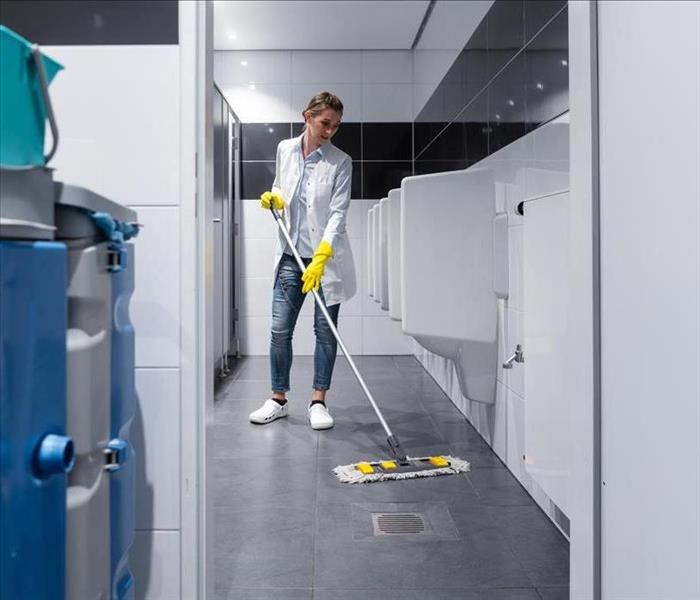How To Mitigate Sewer Damage to Two or More Floors
10/6/2021 (Permalink)
Restrooms in your commercial building in Ogden, UT, are designed for easy cleaning. Every surface is easy to wipe down, and toilets are often self-flushing to prevent backup. When overflow does occur, however, it can make a big mess that doesn't necessarily stay in the room itself. Any space adjacent to or under the restroom may have sewer damage after a toilet malfunction. Water damage mitigation specialists often must address the issues in the restroom as well as the materials and floor beneath it. The typically simple remediation process gains a few steps when damage to multiple floors is involved.
1. Assessment of Sewer Damage
The first thing that technicians do when they arrive on site is to assess the extent of the damage. Because much of the overflow from the flooded toilet is likely to seep in between the tiles on the floor, they may have to remove portions of the material to see how far the problem goes. At the end of the assessment, they should be able to provide a report that provides useful information about the rest of the process:
- Cause of the problem
- Repairs the sewage company needs to provide to prevent further damage
- Areas affected
- Level of contamination and damage
- Tasks involved in mitigation
- Estimated cost of repairs
2. Extraction of Water
Once the members of the remediation team know what needs to be done, the next step is extracting any excess water or sewage from the affected area. Industrial pumps and various other drying methods may be used to remove water, thus stopping the damage in its tracks.
3. Removal of Materials
Having extensive sewer damage that affects the floor beneath the restroom means that technicians will probably need to remove a lot of materials. Not only must they rip out ruined pieces of flooring under the toilet itself but they also must tear out drywall, insulation, and ceiling tiles from all surrounding areas that have been contaminated by the flooding.
4. Disinfection of Surfaces
Since damage from a flooded toilet most likely has a Category 3 contamination level, all remaining surfaces must be disinfected. This part of the process removes any harmful microbes or bacteria, protecting your building and the people in it.
5. Drying of Area
Unmitigated water damage can lead to secondary issues such as mold growth. Therefore, ensuring that the entire area is completely dry before the structure is rebuilt is essential for preventing additional problems. All remaining materials must be free of damage and excess moisture.
6. Restoration of Building
The final step in the mitigation process is restoration. The team doesn't just leave your building gutted and clean. They replace the ceiling, walls, and flooring materials, matching them to the existing structure so that no one can tell there was damage.
Sewer damage from an overflowing toilet may seem like a small problem on the surface, but it can have far-reaching effects, particularly if the water seeps into the floor below it. A trustworthy mitigation team can find and fix all the damage caused by the overflow so that your building's structure remains secure and strong.




 24/7 Emergency Service
24/7 Emergency Service
